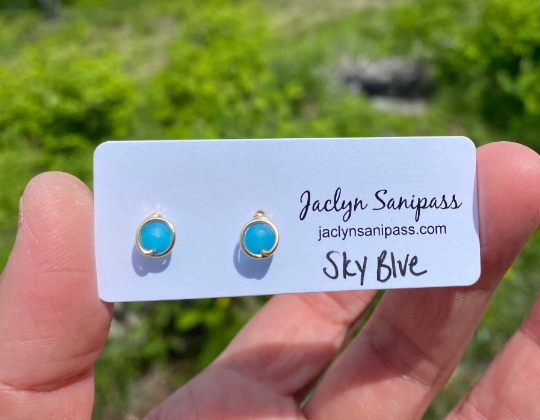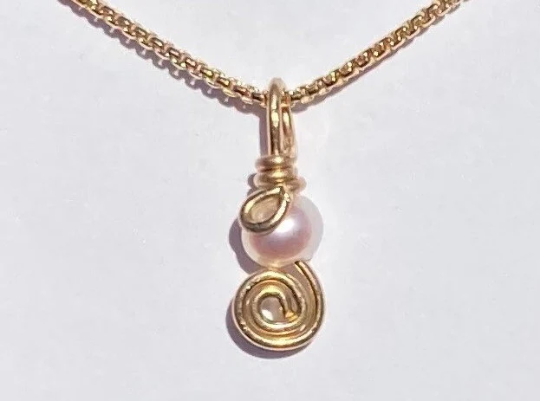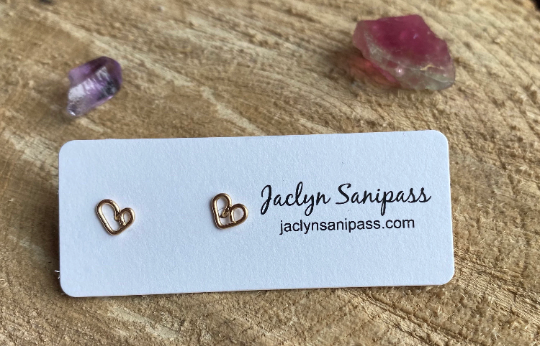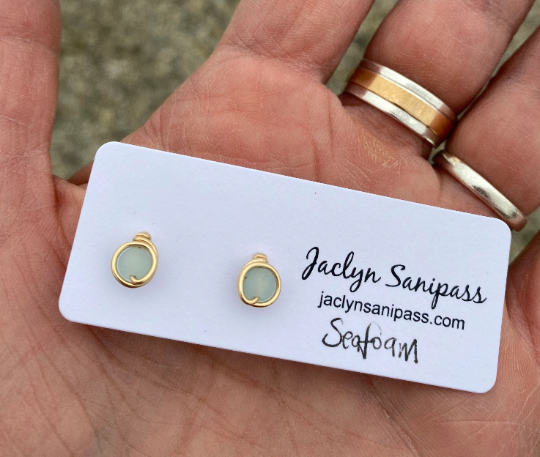Pure Gold vs. 14k Gold Filled vs. Plated Gold Jewelry
When looking to purchase a piece of gold jewelry there are some things to consider. There are three main varieties you would be looking at: pure gold, gold-filled, and gold-plated. Each of these comes with its own pros and cons including price, value, and durability. Oftentimes when referring to pure gold you are still looking at gold alloy because pure gold is simply too soft for jewelry making.
Pure Gold
Pure gold jewelry is going to have the highest price point of the three options. The purity of gold is measured in karats ranging from 10k to 24k, with 24k gold being the purest. It is also going to be the softest metal, making 24k gold not ideal gold for everyday wear due to its durability. Due to the softness of pure gold, it is oftentimes mixed with other metals in a process called alloying to make it stronger. Yellow gold is usually mixed with copper or silver to retain its luster while increasing its durability. Pure gold will never tarnish and will hold its value over time.
14k Gold Filled
Gold-filled jewelry falls in between pure gold and gold-plated jewelry. Gold-filled jewelry contains a substantial layer of gold alloy that is bonded to the jeweler's metal. Due to the level of pressure and heat needed to bond the gold alloy to the jeweler’s metal, it makes a piece of jewelry that is more valuable and durable for wearing compared to gold-plated jewelry.
A majority of Jaclyn Amanda Jewelry is made with Gold Filled as pictured above.
Gold-filled jewelry has 100x more gold alloy than gold-plated jewelry. To make gold-filled pieces, the core metal is sandwiched between two layers of gold alloy which is then heated and passed through a roller several times - a process that both bonds the metals together and thins the sheet out. (Hinesley)
14k Gold Plated
Gold-plated jewelry is the least expensive, least durable, and contains the least amount of gold measuring in at about .05%. Gold-plated jewelry consists of a base metal such as zinc, copper, nickel, or brass that is negatively charged by transmitting electrical current through water and metal salt.
The negatively charged base metal attracts and bonds with the positively charged gold molecules, creating a thin layer of gold over the metal. But this layer can be rubbed off with wear and time, showing the other metal peeking through it. (“Gold vs. Gold Plated: Differences, Pros and Cons, and More”)
Gold-plated jewelry is easier to scratch off the gold layer and expose the base metal, in turn making gold-plated pieces prone to tarnishing. Gold-plated jewelry is better seen as costume jewelry for occasional wear and would not hold up well to be purchased as a high-quality piece to wear daily.
Works Cited
“Gold vs. Gold Plated: Differences, Pros and Cons, and More.” Frost NYC, 28 May 2021, https://www.frostnyc.com/blogs/news/gold-vs-gold-plated-differences-pros-cons. Accessed 13 January 2023.
Hinesley, Janelle. “Gold-Filled vs. Gold-Plated Jewelry.” Halstead Bead, 4 August 2017, https://www.halsteadbead.com/articles/gold-filled-vs-gold-plated. Accessed 13 January 2023.




